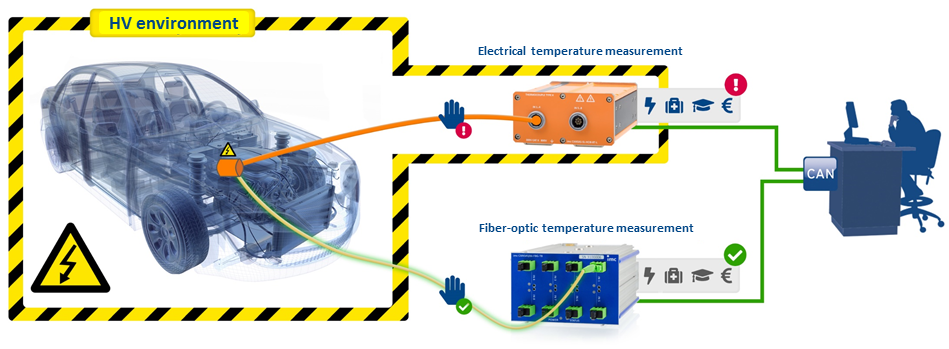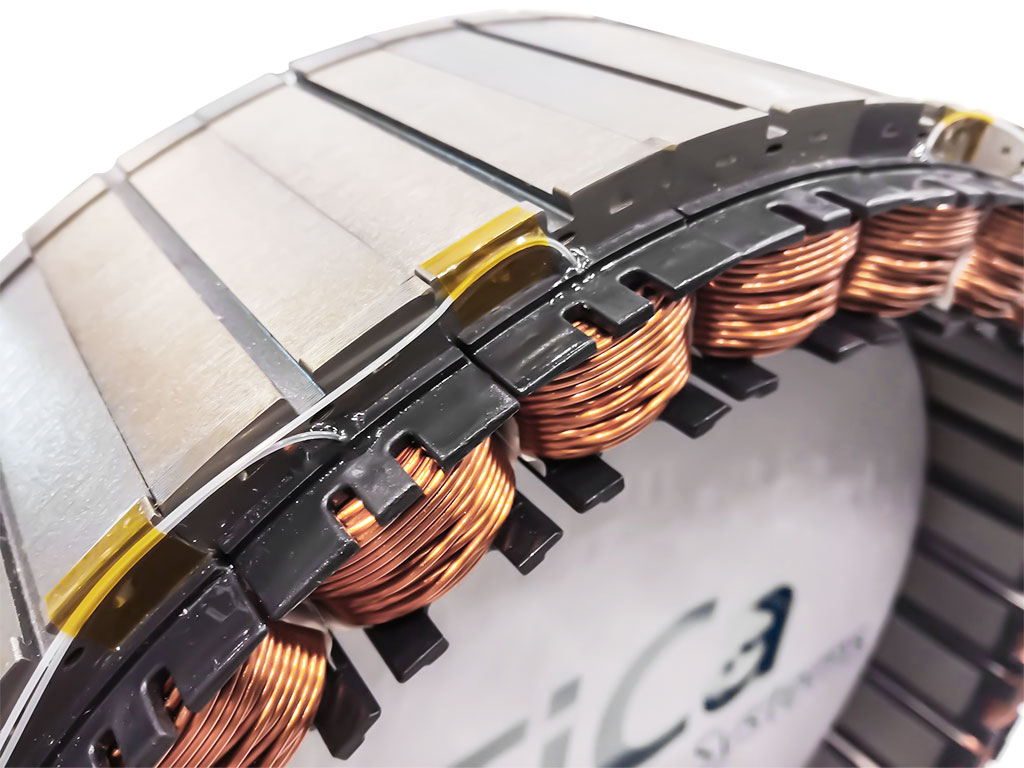Fiber-optic CAN measurement module for temperature measurement
Clean measurement results thanks to immunity to electrostatic and electromagnetic interference (EMI/ESD)
The new, fiber-optic CAN measurement module imc CANSAS-FBG-T8 makes testing in high-voltage environments safer and easier. Thanks to the optical operating method, the measuring point and the instrument are fully decoupled. At eight optical inputs, the module can measure temperatures on arbitrary electrical levels using specially developed sensors with fiber Bragg grating technology (FBG). Data are output via CAN.
8 channels
Temperature measurement
1 kHz sampling rate
100 Hz bandwidth
CAN output
Application examples
Automotive
For applications in the automotive industry, imc offers robust and compact wireless telemetry systems for the non-contact transmission of measurement data for torsion, temperatures, forces and vibrations of rotating parts on vehicles.
Development of electric motors
Modern electric motors are faced with demanding requirements: high torque, long service life, low self-heating. Many tests and measurements are necessary during development to succeed in squaring the circle. Important knowledge is gained if you manage to observe the winding temperature of the motor in active operation.
Such measurements could hardly be accomplished so far with classic high-voltage thermocouples: On the one hand the strong electric and magnetic fields frequently lead to errors in the measurement signals due to EMI and ESD interference. On the other hand the placement of large high-voltage sensor probes alters the winding geometry and distorts the field distribution. This can disturb symmetry and the motors concentricity and even lead to resulting additional noise. Thus, such alterations of the object under test might possibly render the entire test disputable.
However, the 0.5 mm slim FBG sensors can be directly installed in the winding without any mentionable influence. And thanks to the optical measuring method, the signals and results are no longer challenged by electromagnetic interference.
Pantographs on rail-bound vehicles
The pantograph on a train is heavily stressed during operation. The contact strip is in permanent contact with the catenary wire during the journey. The contact strip of the pantograph is made of a softer material to ensure that the catenary wire does not wear too quickly: typically carbon or aluminum alloy is the chosen materials. During travel it is subjected to high thermal stress caused by friction, electric arcing, etc.
With the fiber-optic measurement technology of imc, developers are now able to reliably and precisely record temperatures directly in the carbon brush of the pantograph. Thanks to the fast response behavior of the FBG sensors and the high sampling rate of 1000 Hz, even dynamic temperature curves for electric arcs, burn-off and the like can be examined. The fact that the measurements take place at a level of 15,000 V is only a secondary issue thanks to the fiber-optic technology: Measuring point and data acquisition are electrically decoupled.




